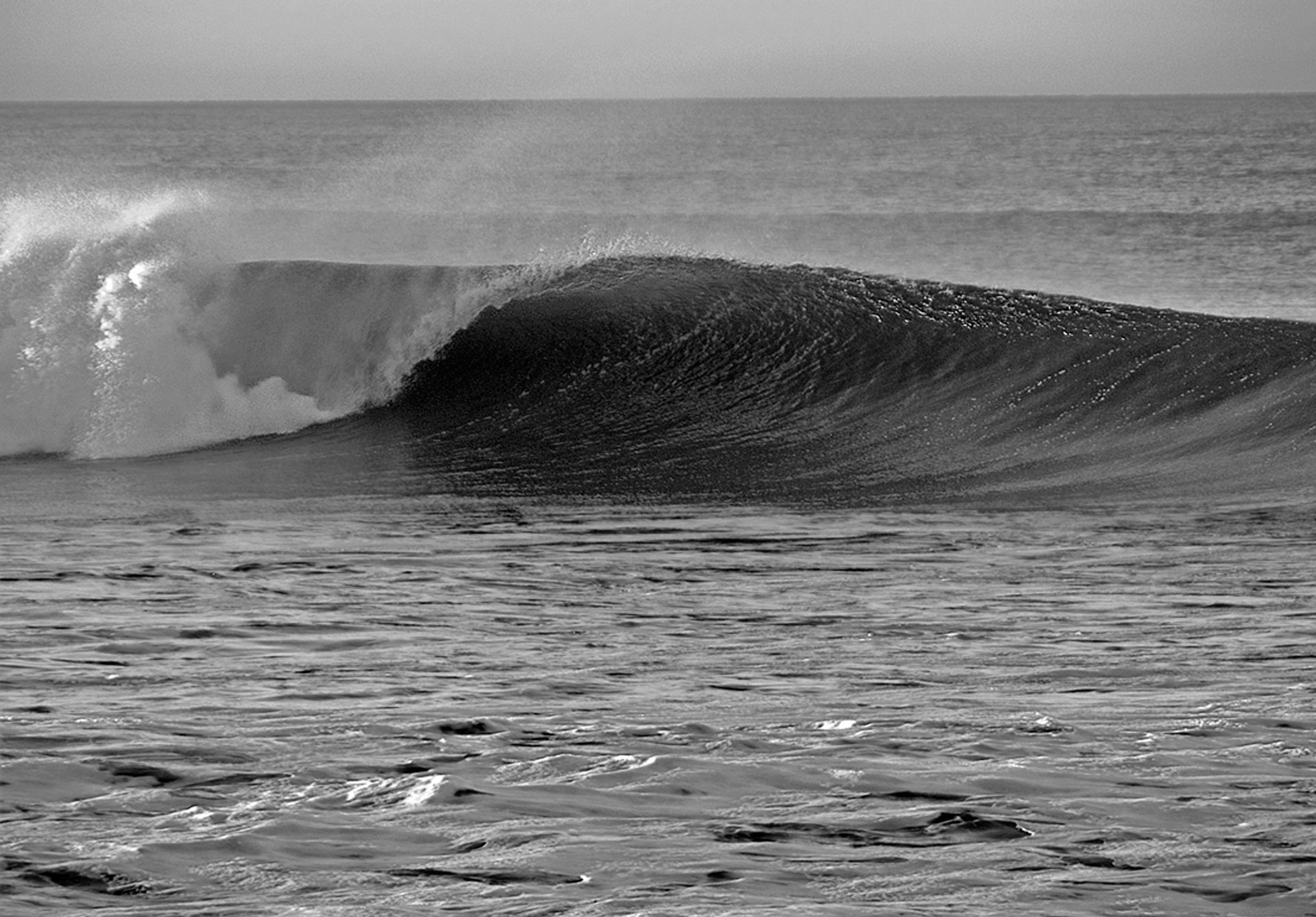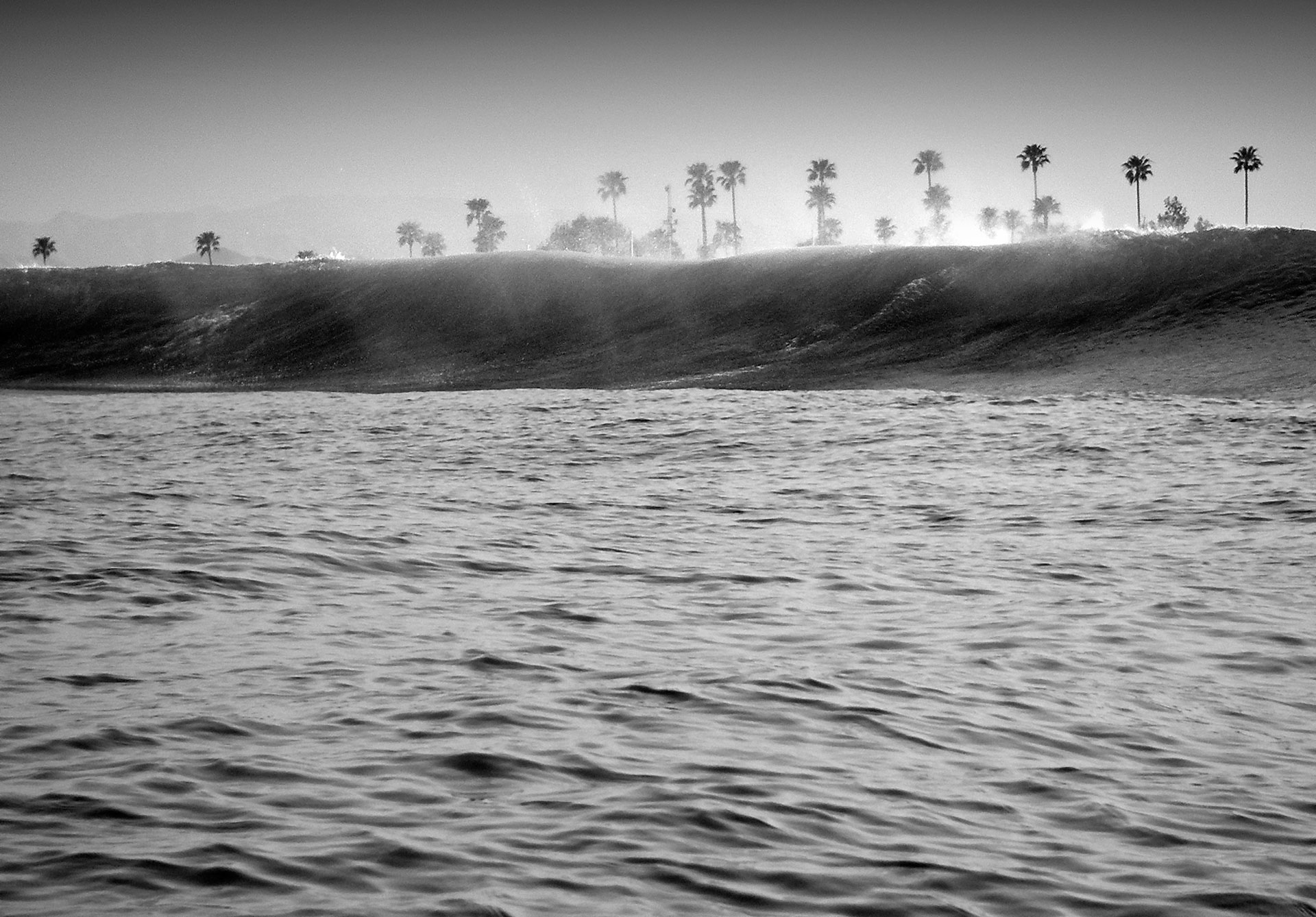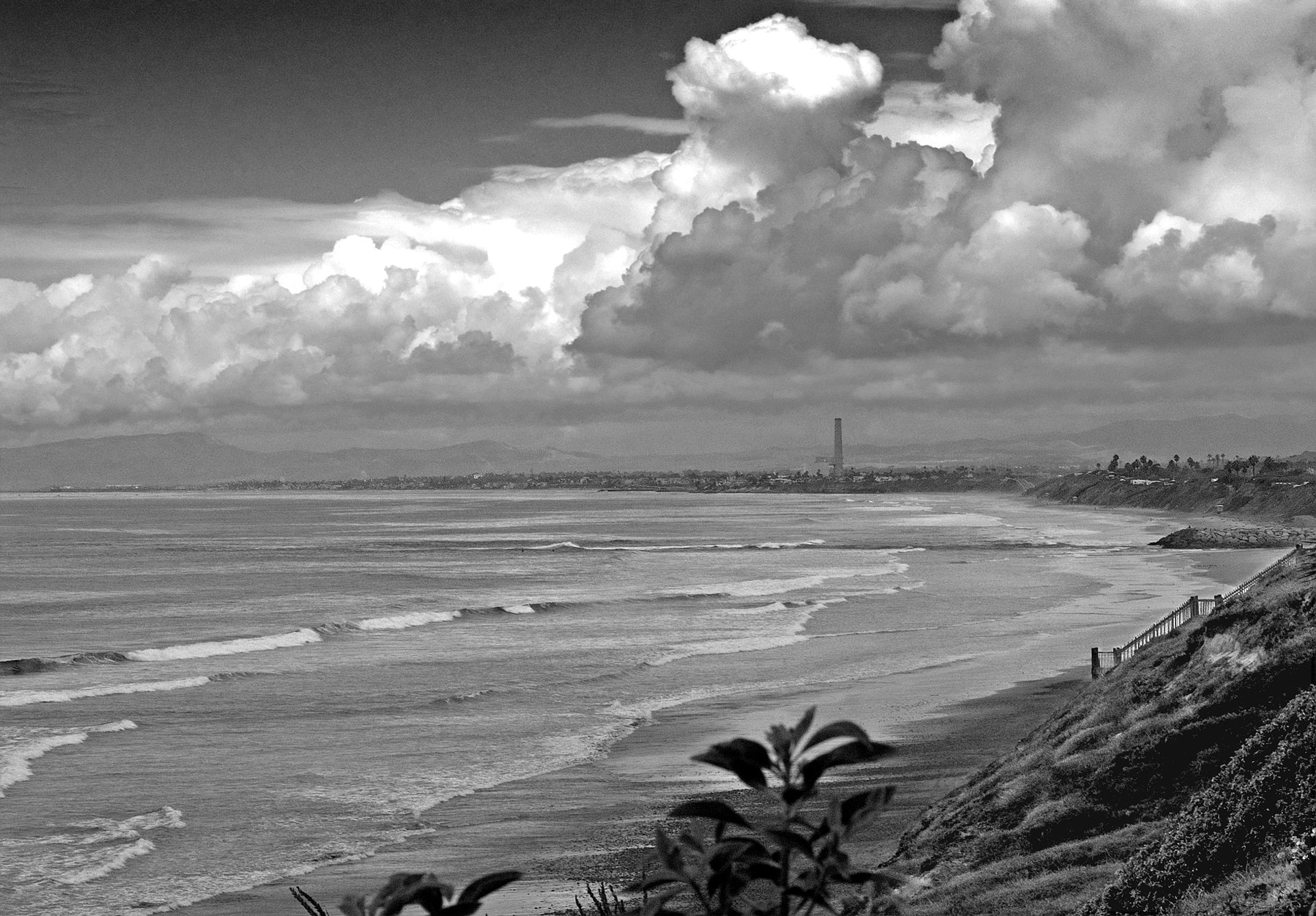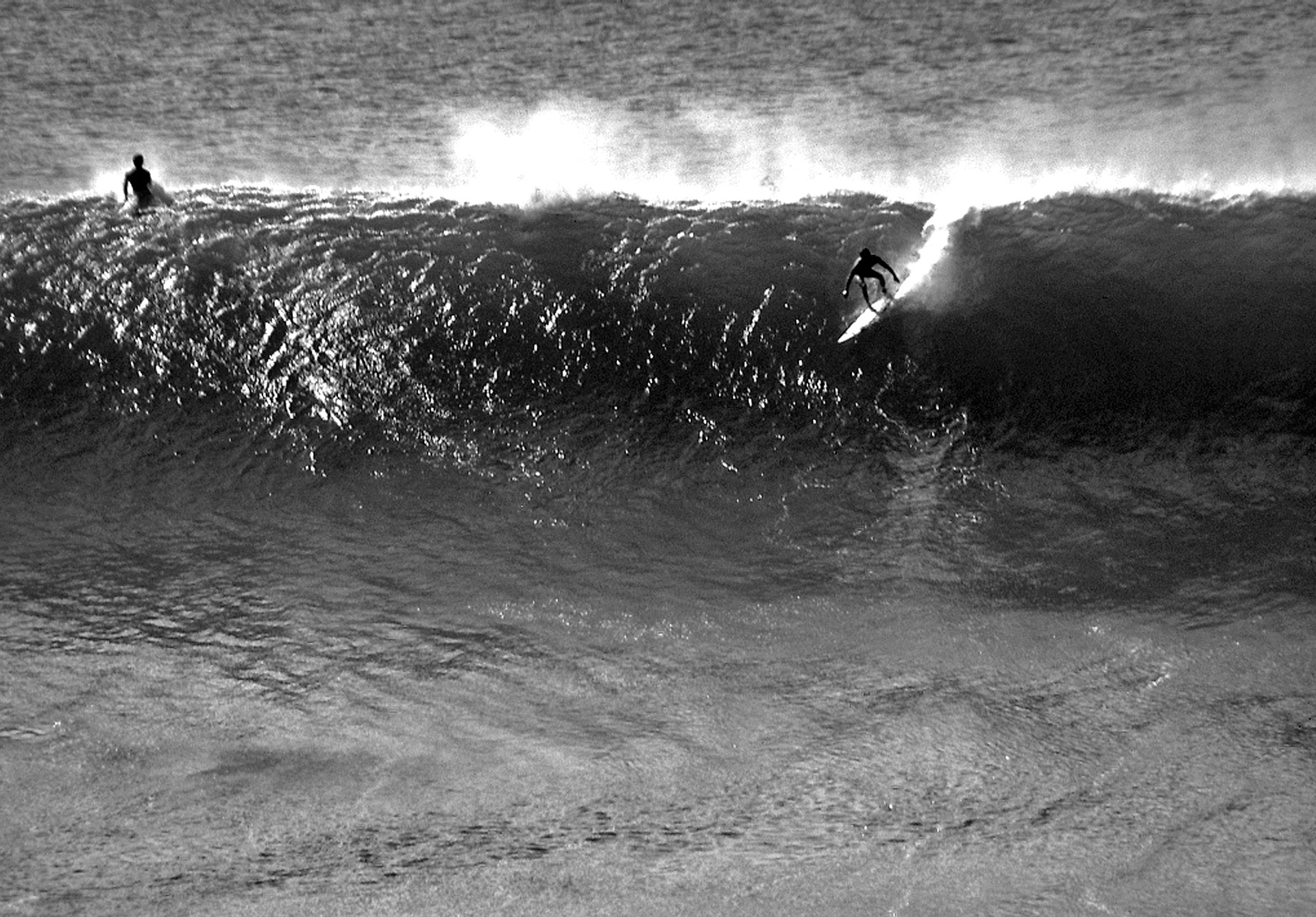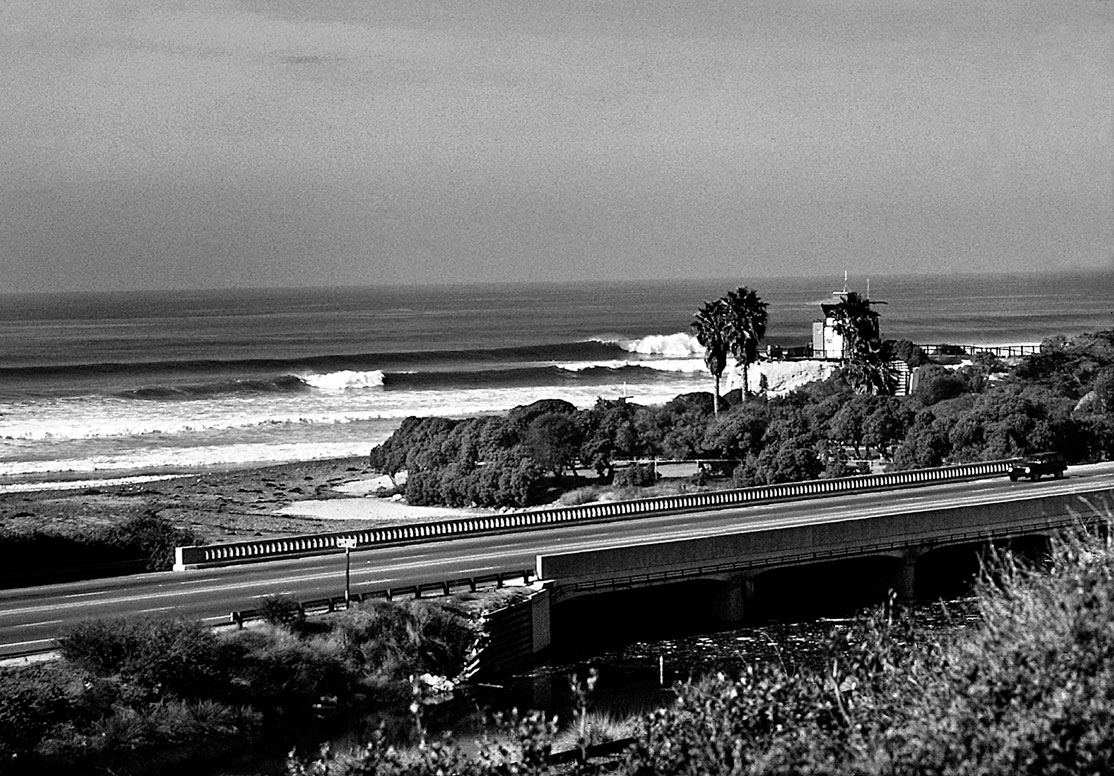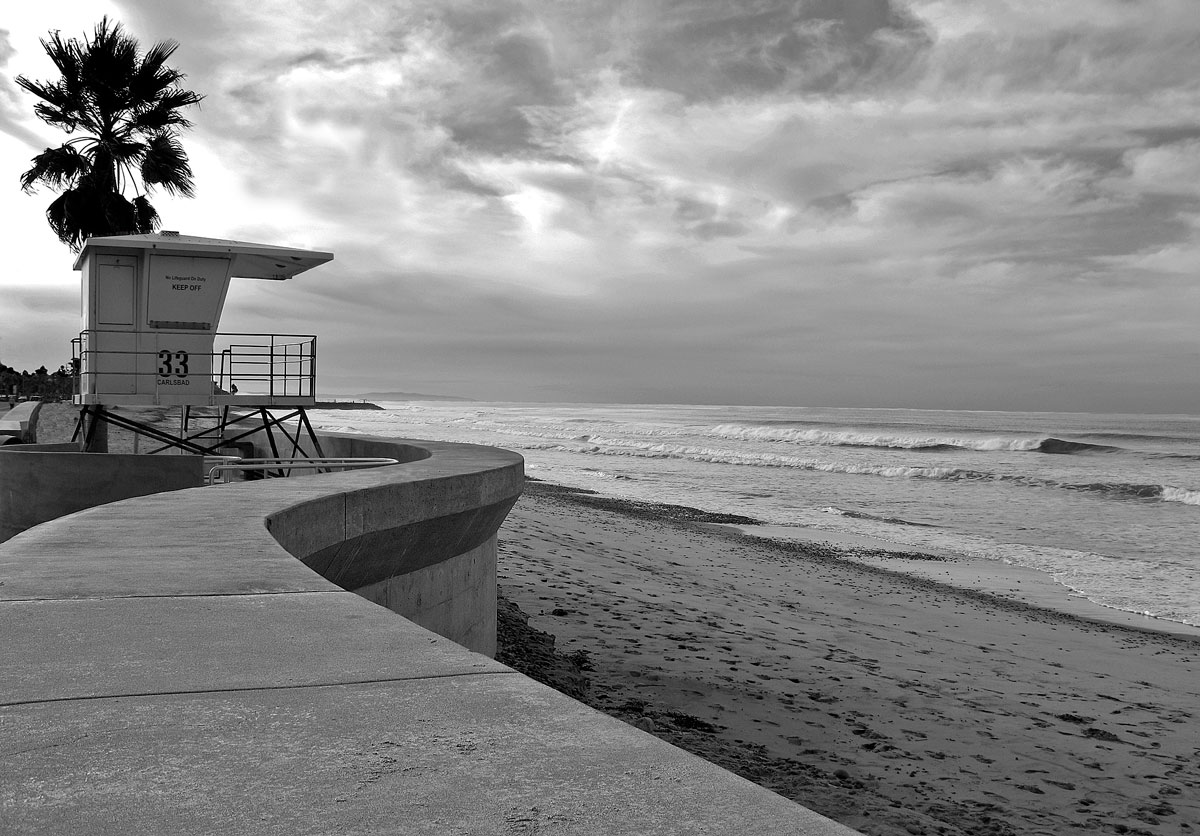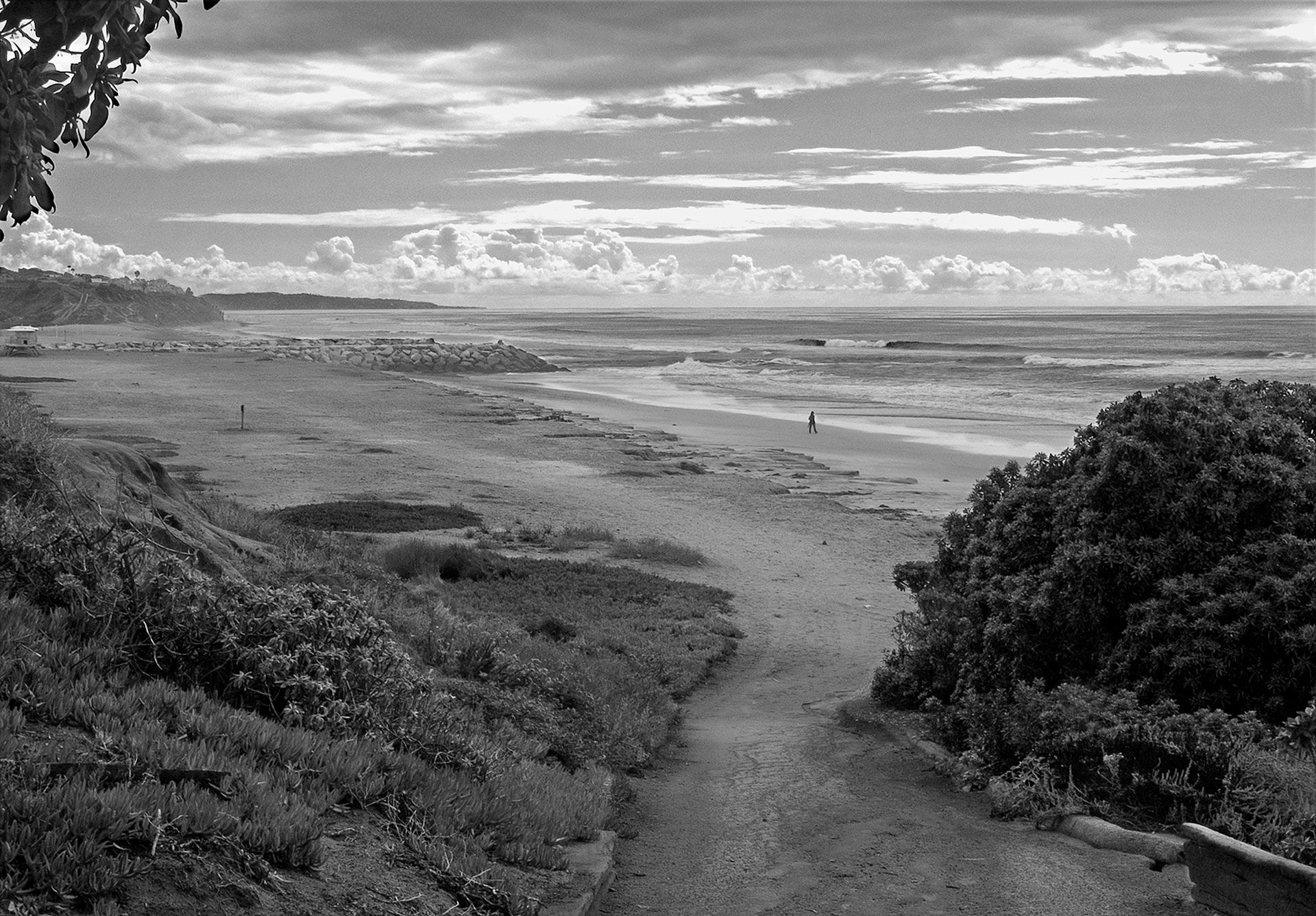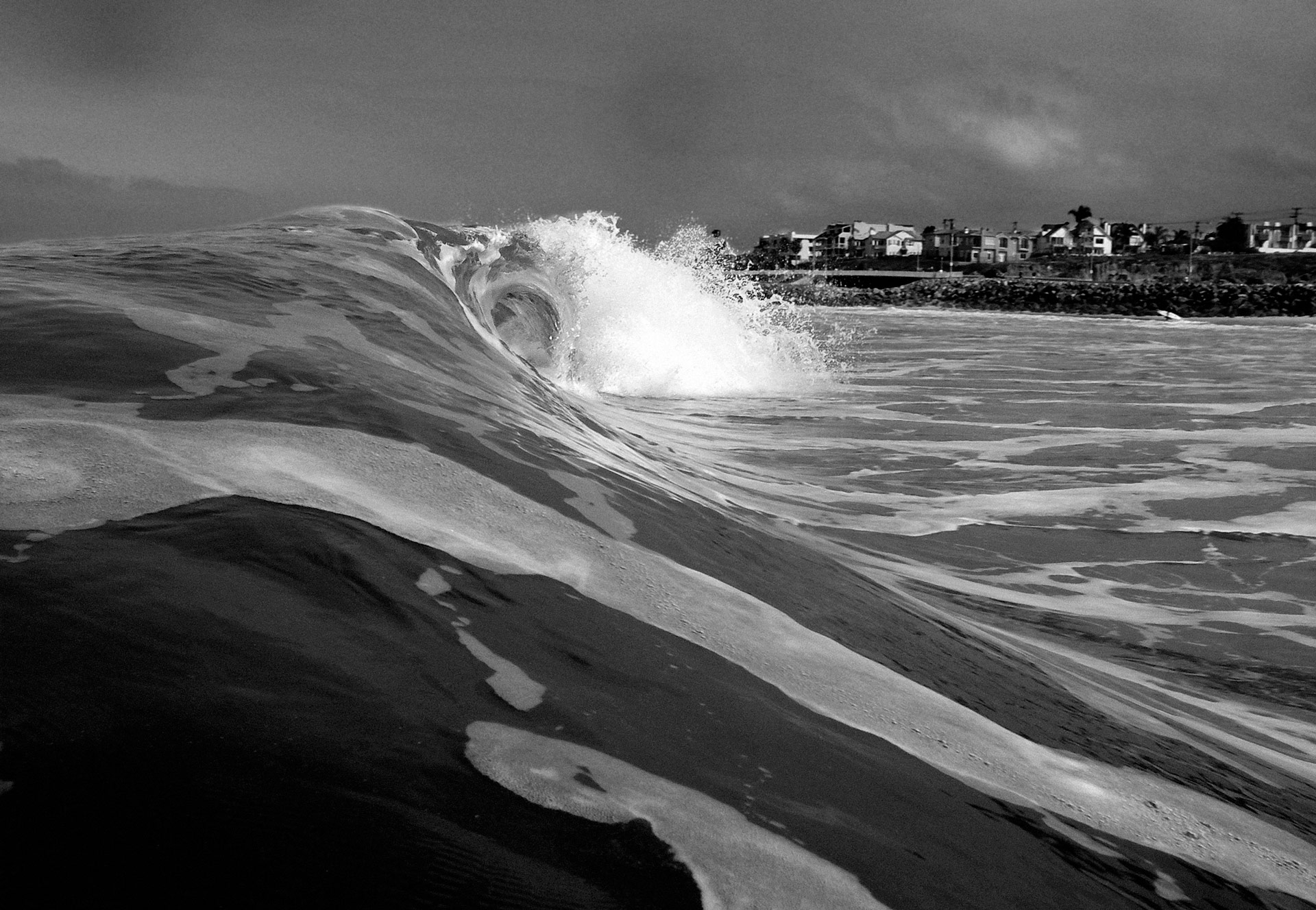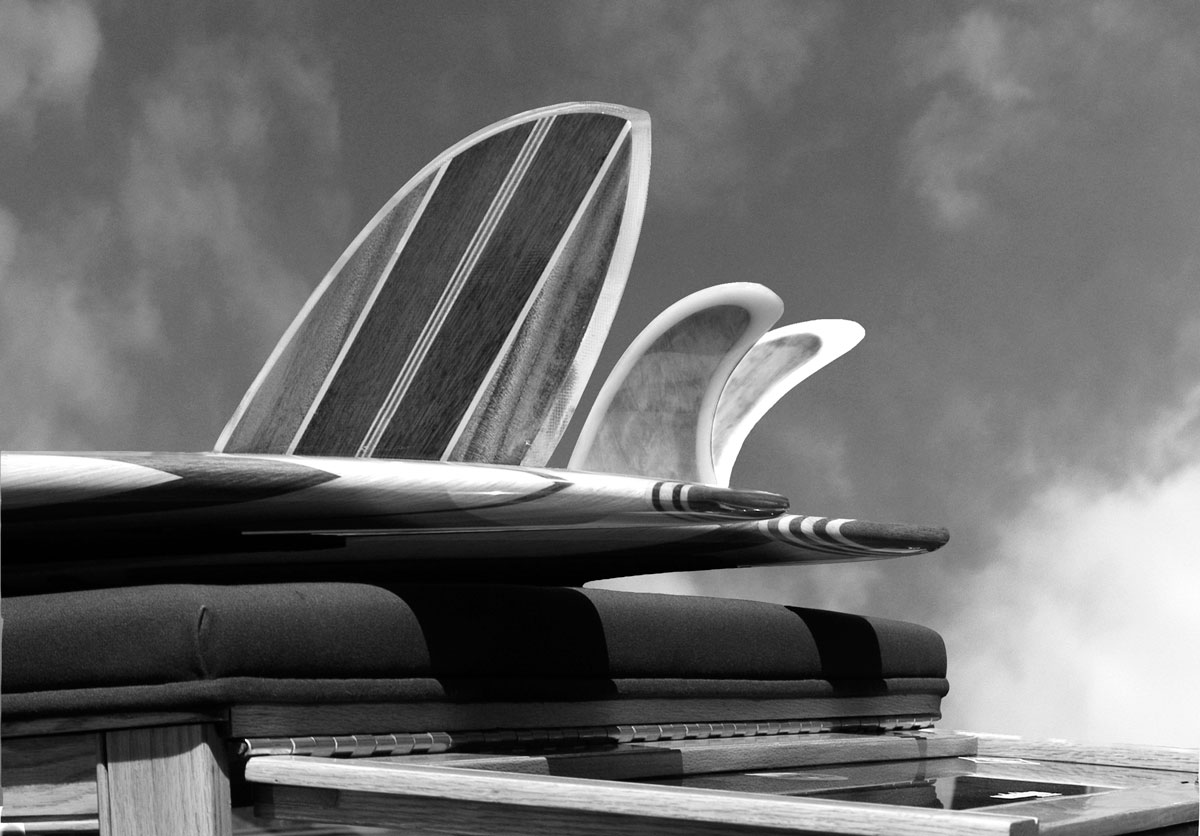Fin Quotes
Al Merrick
I started shaping four fins last November. The three-fin just wasn’t making it in terms of looseness or speed. Tri-fins have that inherent drag, because the middle fin never leaves the water and the twin-fin has too much slide. The thing about the four-fin is you can still surf rail to rail, like a twin-fin but it’s a little stiffer, a more solid feel. You can really apply the power” Surfer vol 24 no 10 oct 1983
Bob Simmons
About surfboard fins, he said, ‘You don’t need much. A deep fin can cause some real problems.” As told by John Elwell
He rejected the notion that wide tails were the cause of ‘spin out,’ and considered it a fin problem. He moved a small fin to each outboard rail at the end and towed them in to 10º. This is because the water is moving the fastest at these points as it leaves the hull. A single centered fin is in the low pressure area of the board and away from the wave. He simply expressed, you need more fin at low speeds and less at high speeds. Simmons and his ‘test pilots’ never spun out with dual fins, surfing the biggest and hardest breaking surf. However, he warned that non-uniform hull shapes could ‘spin out.’ This is because uneven side pressures build up, inducing a possible sudden yaw. These shapes require a deeper fin, increasing appendage resistance as the board surfs forward and sideways. He noted with criticism that narrow tails, give a tubing, sucking wake. Anything that has eddy flow resistance, was a ‘disaster’ and ‘not the way to go!’ John Elwell 1994 Surfers Journal
Carl Ekstrom
Well, some of my more interesting work was with adjustable fin foils, little bolt on foils that we used in the Morey noseriding contest. You could change the pitch and just noseride forever. Doyle was surfing Swami’s and ridding the tip from the Boneyard to the inside. And then there was the bat fin. That was a spin-off from the adjustable fins, because I wanted that little tab on the trailing edge to attach the foils to. Then I found that the bat fin, by itself fought cavitation. Greenough’s doing a variation on this now, as are some of the sailboard fin makers. It’s all about air entrainment on the trailing edge. “ Longboard magazine sep/oct 1996
Dave Parmenter
Fins can be dulled, chipped and cracked as well, and a little careful reshaping can put the snap back into your performance. If your fin is humming, it’s usually due to some little quirk on the trailing edge. Inspect the back of each fin carefully and, if need be, sand it smooth to the foil. This is also a good opportunity to save yourself from injury by blunting any ridiculously sharp tips on your fins.” Surfer Magazine 1987
George Downing’s Slot Board
Importantly, skegs had finally caught on, “allowing surfboards to be much shorter and lighter.” I mentioned to Woody that it seemed like it took a long time for the skeg to catch on. “Yeah,” he admitted. “In fact, I didn’t want a skeg. I rebelled against it. We had shaped boards so they wouldn’t slide ass, you know. And I said, ‘What the hell do you want a skeg for?’
“‘Oh,’ they said, ‘It makes it better.’ So, I rode a board with a skeg on it and it didn’t seem to make a difference. So, then George Downing and I made a super board for big waves at Makaha. We had learned to flatten out the rumps a bit. See, you have to have a V. If you don’t have a skeg, you gotta have a V or a round tail and then it won’t slide ass. That holds it. But, the shallower you make the V, the faster it is! The trouble is, you flatten the V, then it gets loose and then it wants to slide ass.
“So, we made one with a pretty flat back end, with little curves on the sides. And so Georgie said, ‘I’ll make a slot, so we can put a skeg in or take it out. We can try it and see the difference.’ So, we went Makaha. They were about 15 foot peaks that day. He went out there without the skeg, first, and he rode it. It rode beautiful; fine. Oh, just no trouble at all. Georgie came in and said, ‘Well, let’s put the skeg in and just try it, anyway. See the difference. See what it’s about.’ So, he puts the skeg in and went back out.
“It looked like he was riding the same, but he came back in and said, ‘Hey, Woody, it’s much better with a skeg.’ So, from that point on, he started putting skegs on ’em. I asked, ‘How is it better?’ He said, ‘Well, it’s not any faster, but it’s more solid and you can turn it real easy with a skeg,’ which we couldn’t do before. Our boards were real stiff turning.” Woody Brown from LegendarySurfers.com
George Downing
In the early days I didn’t know quite where the optimum place was to position my fin,” Downing said in a recent telecon from his shop in Honolulu, Hawaii. “I couldn’t keep glassing my fin on, then re- move it, and re-glass it…that was a pain in the ass. So I began thinking of some way I could attach my fin to my board with- out having to glass it on. Knowing about sailboats and the different wood used for sailboat construction, I made the first fin box out of wood with a groove in it so you could take the fin in and out, plus it would enable me to experiment with different size fins. The only problem with my fin box design was I had no way of securing the fin tight to the box. By making the box out of teak wood, made it perfect for ocean use. I used a piece of cardboard to secure the fin tight against the wood before I paddled out. Unless somebody invented the fin box before me, mine is the first one in history. I still have the original balsa wood board I installed it on.” — board circa late 1940s, fin box added in the early 1950s: Ocean Magazine
Glen Winton
I am probably able to get away with placing the rear fins so far back because I use flex fins adapted from my original twin fin to my four fins. These have full flex due to their small base. Most of the 4 fins I have seen have fins placed up from the tail and set close to the rail. In my opinion this makes them more like twin fins in the way they perform” discussing 4 fin surfboards Surfer vol 24 no 10 oct 1983
Malcom Campbell on the first 3 fin Bonzer
After one wave, I knew we were on to something, and an hour later I knew the single-fin was obsolete as a high-performance vehicle.”
Michel Bourez
This is the model I use in all conditions, from 3-foot to 6-foot. I travel with six boards, all 5’11”. I just change the width and the thickness a little bit. This board is 18.5” wide and I’ll also bring some that are 18.75” and 19”. I bring two of each so I have an identical backup board in case one breaks. I pretty much use this same board at every wave on tour — except in Hawaii. Even here in Tahiti I can still ride my 5’11” when it’s 6-foot. The board holds really well, I just change the fin setup and I’m good to go.” Surfing Magazine April 2014
Eric Geiselman on his new single fin
This one is a Buttons tribute all the way, from the shape to the color. I named it the Kraft Single [laughs]. I’ve ridden single fins in the past, and I love how they feel. You don’t ever need to push them; it’s all about timing and finesse, so there’s nothing better for your surfing. Riding this board helps with my footwork and form, which in turn helps smooth out my surfing when I jump back on my normal shortboard. This is the first single fin my dad has ever shaped me. I’ve noticed when I set the fin farther back it has more bite. But on tight takeoffs, if I try to knife it super hard, it’s definitely tough. There is still a lot of room to play with the fin; every inch makes such a huge difference. This one has a little FCS fin screw so I bring a key in the water and change up the placement after every couple of waves.” Surfing Magazine Feb 2014
Mike Hynson
Fins have always been my passion, how they react. It’s kind of basic, it’s the only thing in the water. I want to teach surfers how to get the best quality out of themselves by adjusting the fins a little bit. By tweaking it here and there, that kind of stuff works.” Interview from Board Riders Review
Mike Perry
Lets get away from that look alike wide-base fin trip. There are many types of fins available. We should explore all the avenues. Actually it’s quite surprising to see how many American (mainland) surfboards are stuck with just any old fin. In other parts of the world it’s not at all uncommon to have the laminator come into the shaping room and ask what type of fin should go with a certain shape and where it should go.” Surfer Magazine vol 20 #9 Sept 1979
Pat Rawson
The fin foil and shape is the most overlooked aspect in modern surfboard design.”
Skip Frye
Nat had stopped by George Greenough’s in Santa Barbara before the contest and George had fashioned him a cut down, flexible fin – the kind he was using on his spoon kneeboards that were the test vehicles. Nat claimed it was the fin that gave him the extra edge but I don’t know. He was such a talented surfer he probably could’ve ridden a telephone pole and still done the job. I’ve had an intense interest in fins ever since then. Fins are so critical in high performance. Any fin is going to work, but to get that alive, springy, fluid feeling, a flexible fin with good tone is a key element. I keep reliving that. I may get away from it for a while but then I’ll get a fin that has that tone, that special feeling, and I’ll be all fired up over it once again.” Longboard Magazine vol.7 no.4 Aug 1999
Taylor Knox
With this particular board, I wanted to use some bigger fins, so we made it a little looser with the rocker at the bottom, double concave between fins, like a little vee — that way I can use the thicker fins and have it still be loose. These days I’ve been leaning toward using bigger fins and more tail rocker instead of a flatter rocker and smaller fins. It seems to be the magic balance.” Surfing Mag Oct 2013
Tom Blake
When I first paddled out the board felt like it was much easier to keep in a straight line, although I thought I might be imagining it. My first wave revealed the truth. Never before had I experienced such control and stability. The board didn’t spin out , it steered easily, and it turned any way you wanted it. There was much to work out, but the seed had been sown.“
Gene Copper
I don’t know about the term “D fin”, what the hell is that? Why do I get uneasy whenever I here it? Maybe the same reason that I resist when one of my old surf spots gets discovered and renamed. ie: “PDF”, “Heavens”. We had Skegs. When the raked fin came out we called them “Speed Skegs” for a short time. Then the term “fins” became the norm since it best described the new design. “D Fin”? Am I alone here? Maybe just old and stubborn.”

